Effect of Calcinated Oyster Shell Powder on Growth, Yield, Spawn Run, and Primordial Formation of King Oyster Mushroom (Pleurotus Eryngii)
Abstract
:1. Introduction
2. Results and Discussion
2.1. Calcination Characteristics of Oyster Shell Powder
2.2. Effect of Oyster Shell Powder on the Mycelial Growth of P. Eryngii
2.3. Effect of Oyster Shell Powder on Duration of Spawn Run and Time to Primordial Formation of P. eryngii
2.4. Effect of Oyster Shell Powder on Calcium Content of the Fruiting Body
3. Experimental
3.1. Strain
3.2. Preparation of Calcinated Powder of Oyster Shell
3.3. Measurement of Calcination Characteristics of Oyster Shell Powder
3.4. Effect of Oyster Shell Powder on Mycelial Growth of P. Eryngii
3.5. Analysis of Ca Contents in Fruiting Bodies of P. Eryngii
3.6. Effect of Oyster Shell Powder on Fruiting Body Harvest in Sawdust Medium
4. Conclusions
References
- Mueller, J.C.; Gawley, J.R.; Lanz, H.; Hayes, W.A. Mineral and heavy metal content of Pleurotus sajor-caju grown on cellulosic residues from a bleached kraft pulp mill. Mushroom News Lett. Trop. 1985, 5, 9–16. [Google Scholar]
- Bisara, R.; Madan, M.; Bisaria, V.S. Mineral content of the mushroom Pleurotus sajor-caju cultivated on different agro-residues. Mushroom J. Trop. 1987, 7, 53–60. [Google Scholar]
- Ragunathan, R.; Gurusamy, R.; Palaniswamy, M.; Swaminathan, K. Cultivation of Pleurotus spp. on various agro-residues. Food Chem. 1996, 55, 139–144. [Google Scholar] [CrossRef]
- Royse, D.J. Specialty mushrooms. Mushroom News 1995, 43, 4–21. [Google Scholar]
- Cha, W.S.; Park, S.S.; Kim, S.J.; Choi, D. Biochemical and enzymatic properties of a fibrinolytic enzyme from Pleurotus eryngii cultivated under solid-state conditions using corn cob. Bioresour. Technol. 2010, 101, 6475–6481. [Google Scholar] [CrossRef] [PubMed]
- Cho, S.H.; Lee, S.D.; Ryu, J.S.; Kim, N.G.; Lee, D.S. Changes in quality of king oyster shell mushroom (Saesongi) during modified atmosphere storage. Korean J. Postharvest Sci. Technol. 2001, 8, 367–373. [Google Scholar]
- Kang, M.S.; Kang, T.S.; Kang, A.S.; Shon, H.R.; Sung, J.M. Studies on mycelial growth and artificial cultivation of Saesongi. Korean J. Mycol. 2000, 28, 73–80. [Google Scholar]
- Chang, S.T.; Chiu, S.W. Mushroom production: An economic measure in maintenance of food security. In Microbial Technology: Economic and Social Aspects; DaSilva, E.J., Ratledge, C., Sasson, A., Eds.; Cambridge University Press: Cambridge, UK, 1992; pp. 110–141. [Google Scholar]
- Levanon, D. Mushroom cultivation: environmental problem to environmental bene®t. In Mushroom Biology and Mushroom Products; Chang, S.-T., Buswell, J.A., Chiu, S.W., Eds.; The Chinese University Press: Hong Kong, 1993; pp. 331–338. [Google Scholar]
- Bech, K.; Rasmussen, C.R. Further investigations on organic and inorganic supplementation of mushroom compost. Mushroom Sci. 1968, 7, 329–342. [Google Scholar]
- Hayes, W.A. Nutritional factors in relation to mushroom production. Mushroom Sci. 1972, 8, 662–674. [Google Scholar]
- Chikthimmah, N.; La Borde, N.F.; Beelman, R.B. Hydrogen peroxide and calcium chloride added to irrigation water as a strategy to reduce bacterial populations and improve quality of fresh mushrooms. J. Food Sci. 2005, 70, M273–M278. [Google Scholar] [CrossRef]
- Sasaki, H.; Aoyagi, Y.; Dasuga, A.; Tanaka, Y.; Masuzawa, M.; Kawai, H. Relationships between fruit body compositions and substrates in bunashimeji [Hypsizygus marmoreus (peck) bigelow], nameko [Pholiota nameko (J. Ito)] and enokitake [Flammulina velutipes (Curt: Fr.) Sing.] mushrooms cultivated on sawdust substrate beds. J. Jpn. Soc. Food Sci. Technol. 1995, 42, 471–477. [Google Scholar] [CrossRef]
- Sugahara, T.; Matsuzawa, M.; Fujishiro, S.; Aoyagi, Y.; Hosogai, Y. Mineral contents in edible mushrooms growing in soil. J. Jpn. Soc. Food Sci. Technol. 1990, 37, 540–546. [Google Scholar] [CrossRef]
- Tham, L.X.; Matsuhashi, S.; Kume, T. Growth and fruit body formulation of Ganoderuma lucidum on media supplemented with vanadium, selenium and germanium. Mycoscience 1999, 40, 87–92. [Google Scholar] [CrossRef]
- Yasui, A.; Tsutsumi, C.; Takasaki, M.; Mori, T. Absorption of elements from heavy metals containing culture media by oyster shell mushroom (Pleurotus ostreatus (Fr.) Quel.). J. Jpn. Soc. Food Sci. Technol. 1998, 35, 160–165. [Google Scholar] [CrossRef]
- Kawai, H.; Sugahara, T.; Fujishiro, S.; Matsuzawa, M.; Aoyagi, Y.; Hosogai, Y. Mineral contents of edible mushrooms growing on wood. Comparison with mineral contents of mushrooms growing in soil. J. Jpn. Soc. Food Sci. Technol. 1990, 37, 468–473. [Google Scholar] [CrossRef]
- Kawai, H.; Sugahara, T.; Matsuzawa, M.; Sumiyashiki, K.; Aoyagi, Y.; Hosogai, Y. Mineral contents in edible mushrooms. J. Jpn. Soc. Food Sci. Technol. 1986, 33, 250–255. [Google Scholar] [CrossRef]
- Tabata, T.; Ogura, T. Absorption of calcium and magnesium by the fruiting body of the cultivated mushroom Hypsizygus marmoreus (peck) bigelow from sawdust culture media. J. Food Sci. 2003, 68, 76–79. [Google Scholar] [CrossRef]
- Tabata, T.; Shinohara, H. Absorption of calcium salts added culture media by Hiratake (Pleurotus ostreatus (Fr.) Quel.) and Nameko (Pholiota nameko J. Ito). J. Jpn. Soc. Food Sci. Technol. 1995, 42, 682–686. [Google Scholar] [CrossRef]
- Lee, N.H.; Im, M.H.; Choi, U.K. Calcium absorption by the fruit body of Saesongi mushroom. Food Sci. Biotechnol. 2006, 15, 308–311. [Google Scholar]
- Choi, U.K.; Bajpai, V.K.; Lee, N.H. Influence of calcinated starfish powder on growth, yield, spawn run and primordial germination of king oyster shell mushroom (Pleurotus eryngii). Food Chem. Toxicol. 2009, 47, 2830–2833. [Google Scholar] [CrossRef] [PubMed]
- Perkin Elmer. Analytical Methods for Atomic Absorption Spectroscopy; Perkin-Elmer Corporation: Norwalk, Connecticut, USA, 1968; pp. 1–310. [Google Scholar]
- Chang, S.T.; Buswell, J.A.; Miles, P.G. Genetics and Breeding of Edible Mushrooms; Gordon and Breach Science Publishers: Amsterdam, The Netherlands, 1991; p. 68. [Google Scholar]
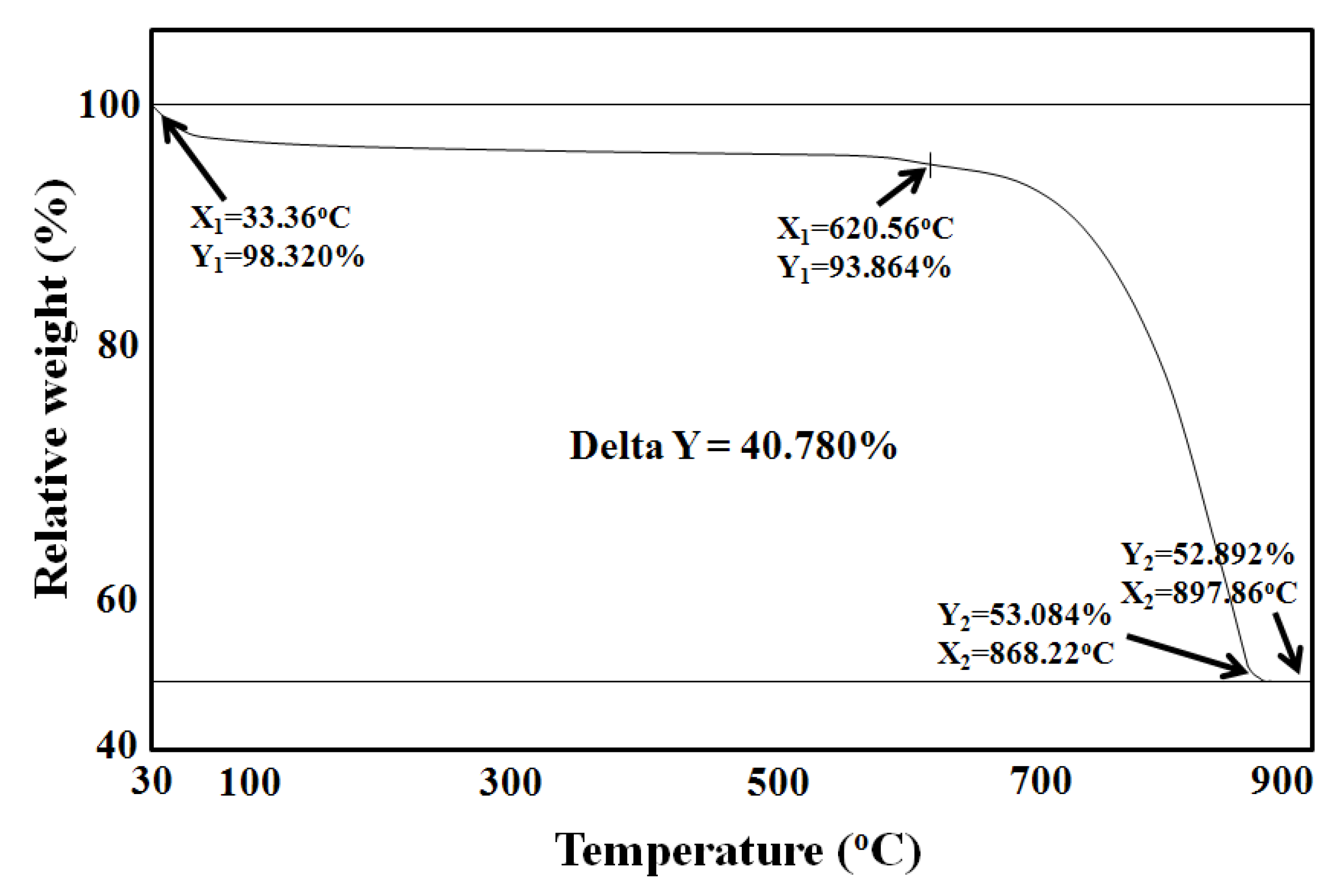

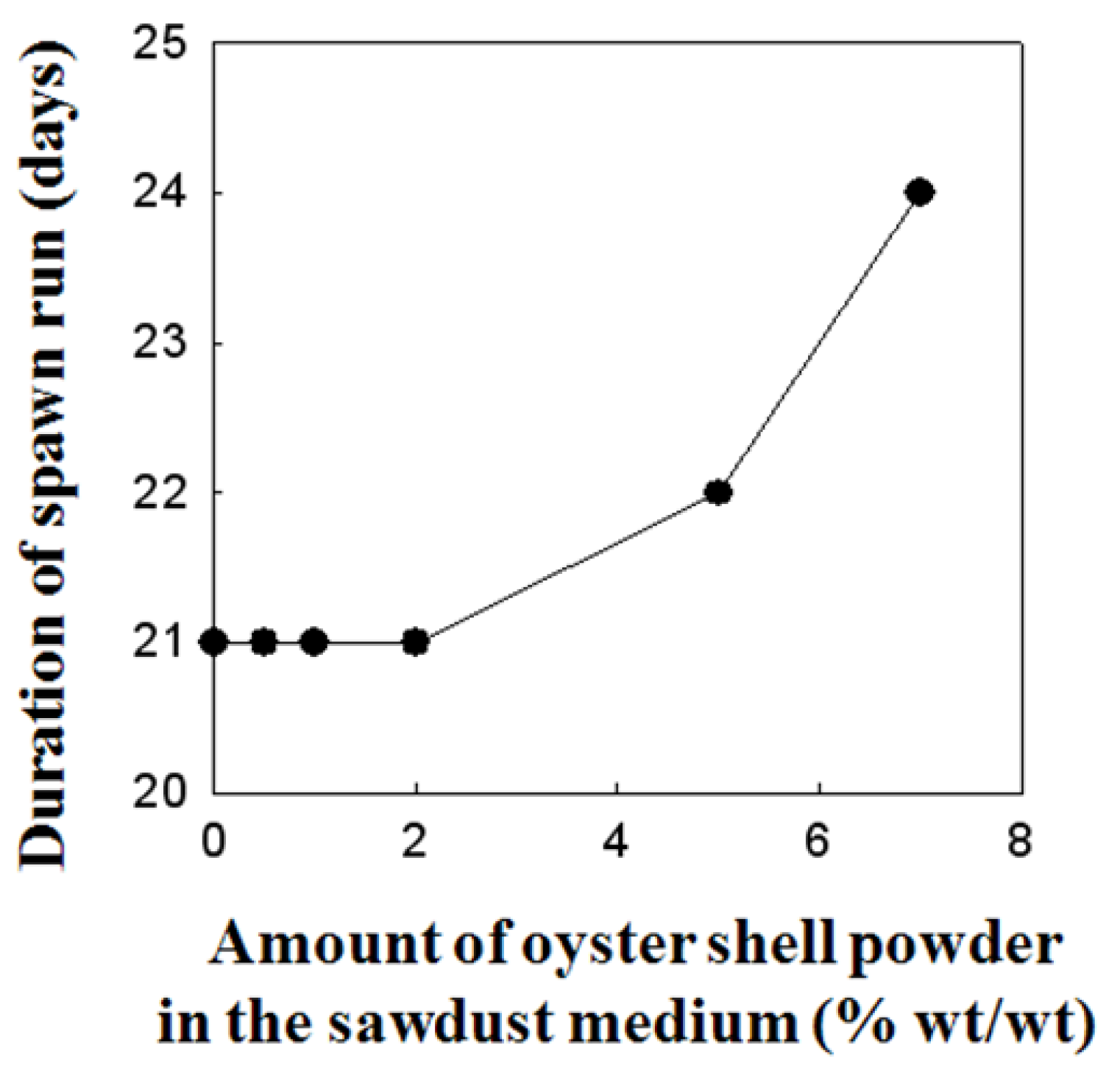
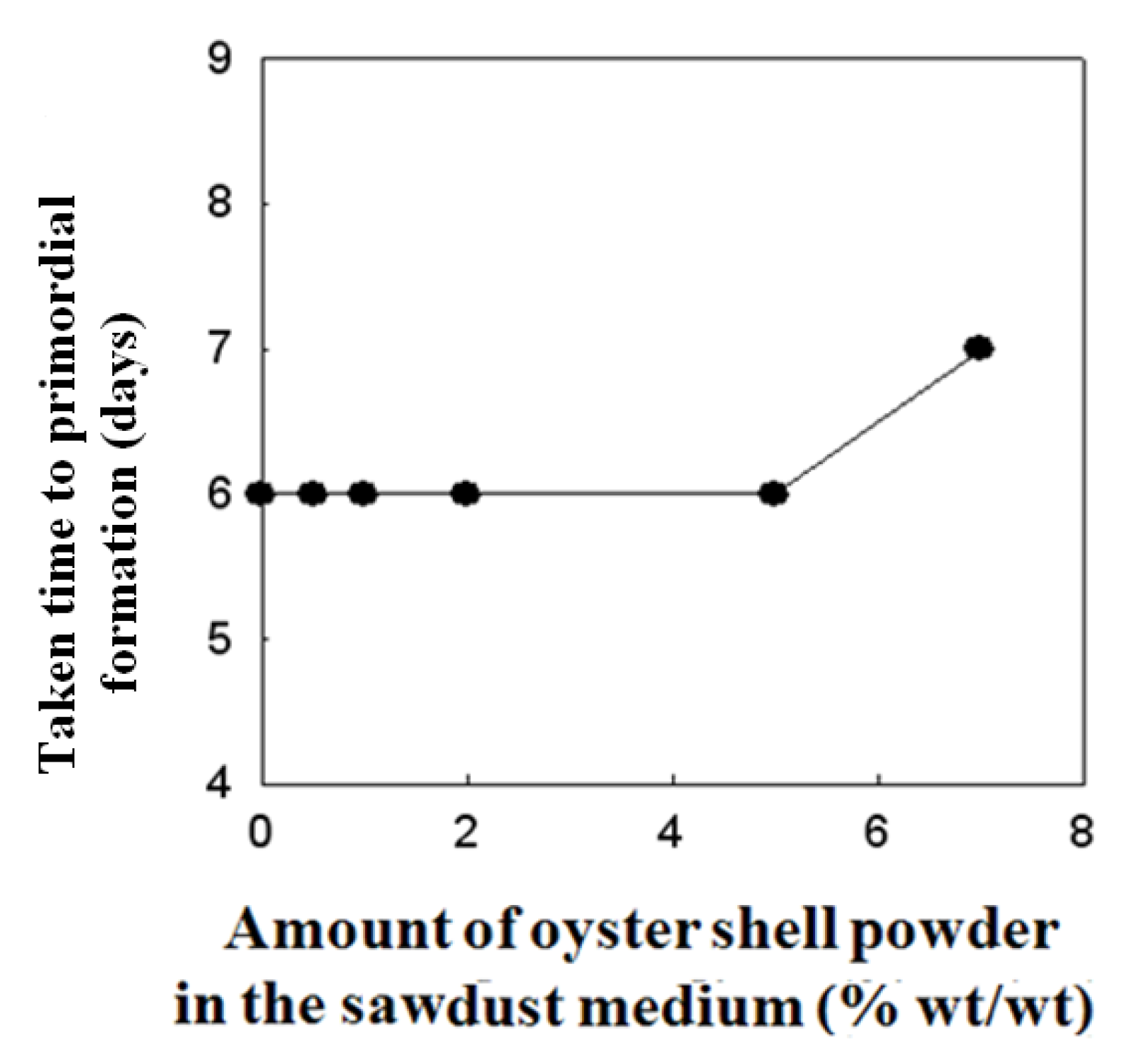
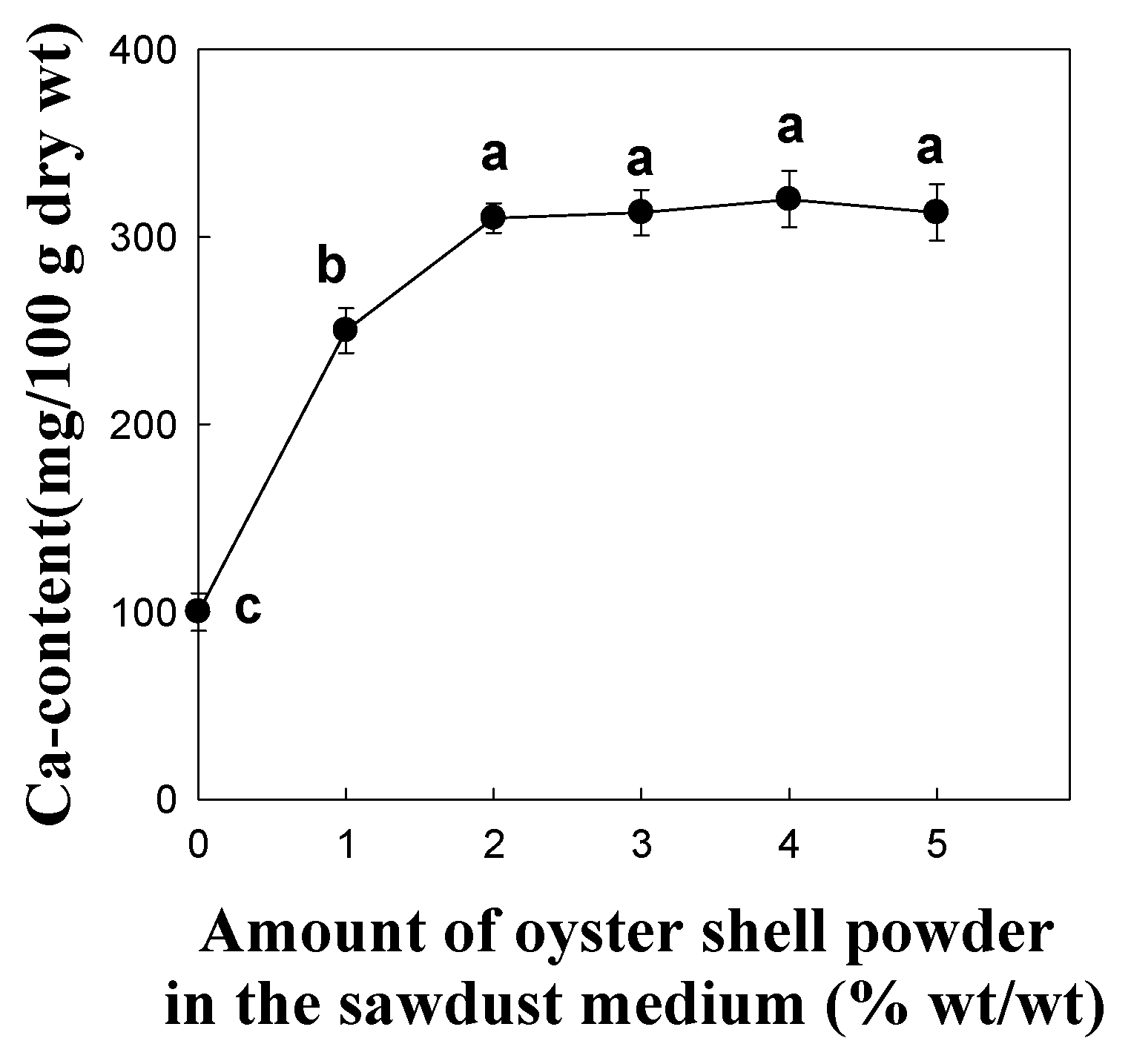
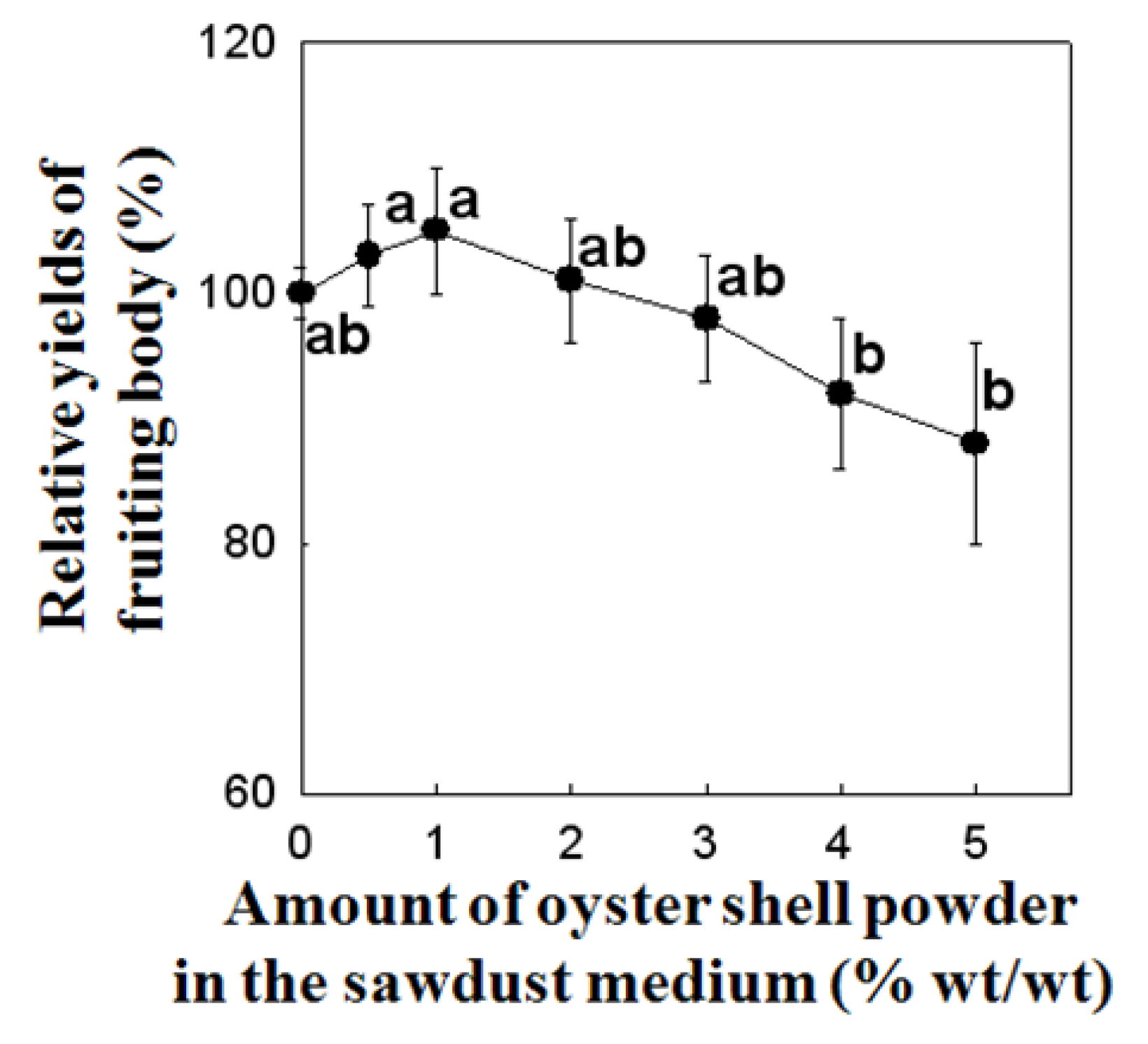
© 2011 by the authors; licensee MDPI, Basel, Switzerland. This article is an open access article distributed under the terms and conditions of the Creative Commons Attribution license (http://creativecommons.org/licenses/by/3.0/).
Share and Cite
Choi, U.-K.; Lee, O.-H.; Kim, Y.-C. Effect of Calcinated Oyster Shell Powder on Growth, Yield, Spawn Run, and Primordial Formation of King Oyster Mushroom (Pleurotus Eryngii). Molecules 2011, 16, 2313-2322. https://doi.org/10.3390/molecules16032313
Choi U-K, Lee O-H, Kim Y-C. Effect of Calcinated Oyster Shell Powder on Growth, Yield, Spawn Run, and Primordial Formation of King Oyster Mushroom (Pleurotus Eryngii). Molecules. 2011; 16(3):2313-2322. https://doi.org/10.3390/molecules16032313
Chicago/Turabian StyleChoi, Ung-Kyu, Ok-Hwan Lee, and Young-Chan Kim. 2011. "Effect of Calcinated Oyster Shell Powder on Growth, Yield, Spawn Run, and Primordial Formation of King Oyster Mushroom (Pleurotus Eryngii)" Molecules 16, no. 3: 2313-2322. https://doi.org/10.3390/molecules16032313
APA StyleChoi, U.-K., Lee, O.-H., & Kim, Y.-C. (2011). Effect of Calcinated Oyster Shell Powder on Growth, Yield, Spawn Run, and Primordial Formation of King Oyster Mushroom (Pleurotus Eryngii). Molecules, 16(3), 2313-2322. https://doi.org/10.3390/molecules16032313





